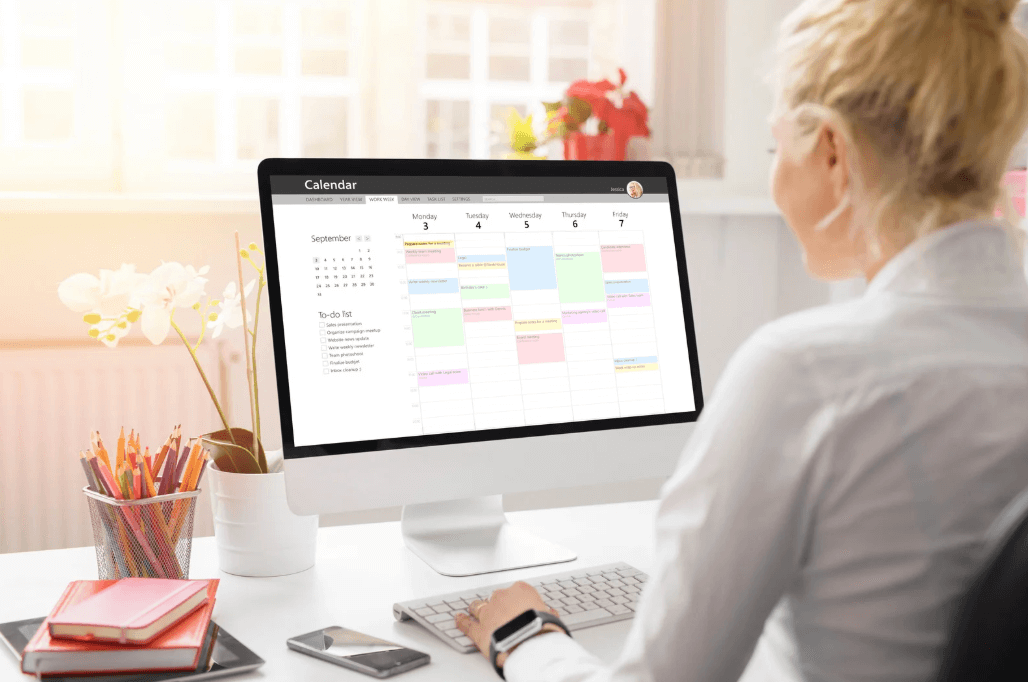As therapists, we often talk with clients about the importance of boundaries, balance, and intentional living. But when it comes to our own schedules, it can be easy to fall into survival mode, squeezing in sessions, paperwork, and life tasks wherever they’ll fit. Over time, this can lead to exhaustion and disconnection from the very work that drew us to the field.
Designing an “ideal week” doesn’t mean every day will run perfectly. Instead, it gives you a guiding framework, something to come back to when your calendar starts filling up faster than you can breathe. Think of it as setting the rhythm that best supports you and your clients.
Here are a few practical tips for building out your ideal week.
1. Start with Your Non-Negotiables
Before you plug in client sessions, decide what you must protect to function at your best. For example:
- Personal routines (exercise, meditation, school drop-offs)
- Administrative blocks (notes, billing, emails)
- Supervision, consultation, or professional development
- Restorative time (lunch, breaks, transition space between sessions)
Anchoring these first can ensure your week has structure around your needs, rather than filling yourself in around everyone else.
2. Group Similar Tasks Together
Switching between session mode, admin mode, and personal tasks can be draining. Consider batching similar activities so your brain can stay in one lane at a time:
- Set aside a single block of time each week to return phone calls and emails instead of scattering them throughout your days
- Dedicate one afternoon for billing and paperwork so financial tasks don’t creep into client time
- Reserve a block for professional development (reading, CE courses, or supervision) so you stay consistent with growth
- Use a “personal admin hour” once a week for scheduling appointments, meal planning, or errands to clear mental space
When tasks are grouped, your focus can deepen and the week can feel more organized.
3. Protect Breaks Like Appointments
It’s tempting to squeeze in “just one more” client, but back-to-back sessions with no downtime catch up quickly. Protect short breaks like you would a meeting:
- A 10–15 minute pause for grounding between clients
- A true lunch break away from your desk
- A hard stop in the evenings to transition out of work mode
Small breaks aren’t luxuries, they’re what help make a full caseload sustainable.
4. Map Your Energy Not Just Your Time
Notice your natural rhythms. Do you feel sharper and more present in the morning? Do you hit a slump after lunch?
- Schedule your most demanding sessions or supervision during your peak focus hours
- Reserve lower-energy times for routine tasks like email or billing
- Use end-of-day windows for grounding practices to signal “work is done”
Designing around energy helps you show up fully rather than fighting against your body’s clock.
5. Build in Flexibility
An “ideal week” isn’t meant to be rigid. It’s a template that flexes with life’s unpredictability. To keep it workable:
- Leave buffer spaces for cancellations or reschedules
- Add one admin block that can shift if needed
- Check in weekly to reflect on what worked, what didn’t, and what needs adjusting
Think of it less as a strict schedule and more as a rhythm that keeps you grounded while allowing room for flow.
6. Align Your Week with Your Bigger Goals
If your long-term goals include growing a niche, offering workshops, or simply working fewer evenings, start reflecting that in your schedule now. Even small shifts like blocking one hour a week for creative planning can move you closer to your vision.
Your ideal week should support not only your present caseload but also your evolving practice.
7. Use Tools That Support Your Schedule
The right systems can make or break how realistic your “ideal week” feels. At Great Lakes Psychology Group, clinicians have access to a user-friendly, customized EMR system that makes scheduling simple and flexible.
With built-in calendar management, you can:
- Easily block off personal time, admin hours, or supervision before client sessions fill in
- Adjust availability in real-time to reflect your shifting needs
- Streamline scheduling so your calendar reflects the boundaries you’ve set
When your tools are designed to support your workflow, it becomes much easier to live out your ideal week.
Putting It Into Practice
Building your ideal week isn’t about perfection. It’s about creating a structure that protects your energy, sustains your practice, and allows you to stay connected to the work you love.
Try experimenting with one or two changes at a time, and give yourself grace as you refine. The goal is not to control every hour but to design a week that feels intentional, balanced, and true to you.

 A Clinician’s Guide to Planning for Winter Breaks in Therapy
A Clinician’s Guide to Planning for Winter Breaks in Therapy Social Media for Therapists Who Want to Grow Their Private Practice
Social Media for Therapists Who Want to Grow Their Private Practice Building Lasting Therapeutic Relationships from Session One
Building Lasting Therapeutic Relationships from Session One